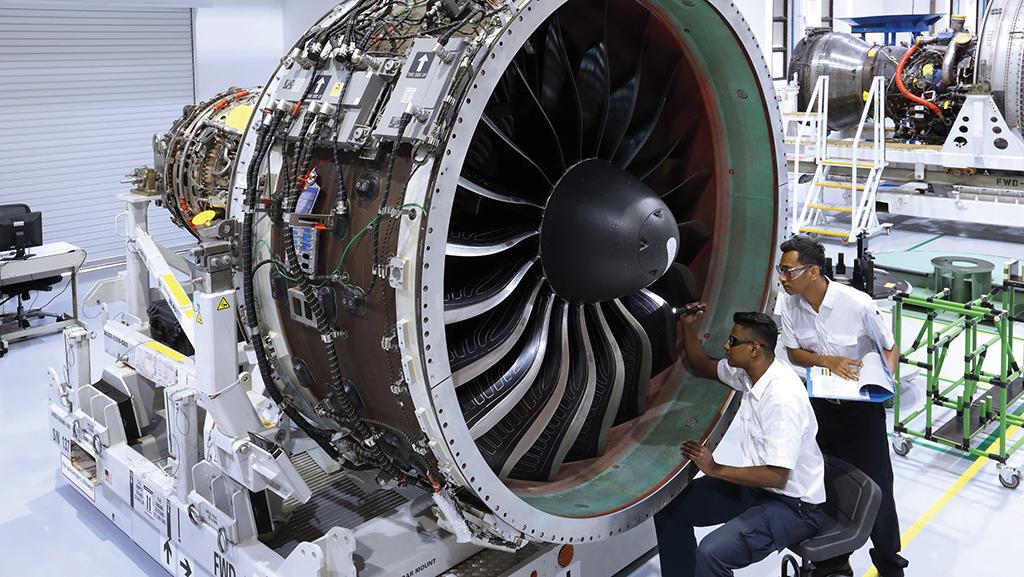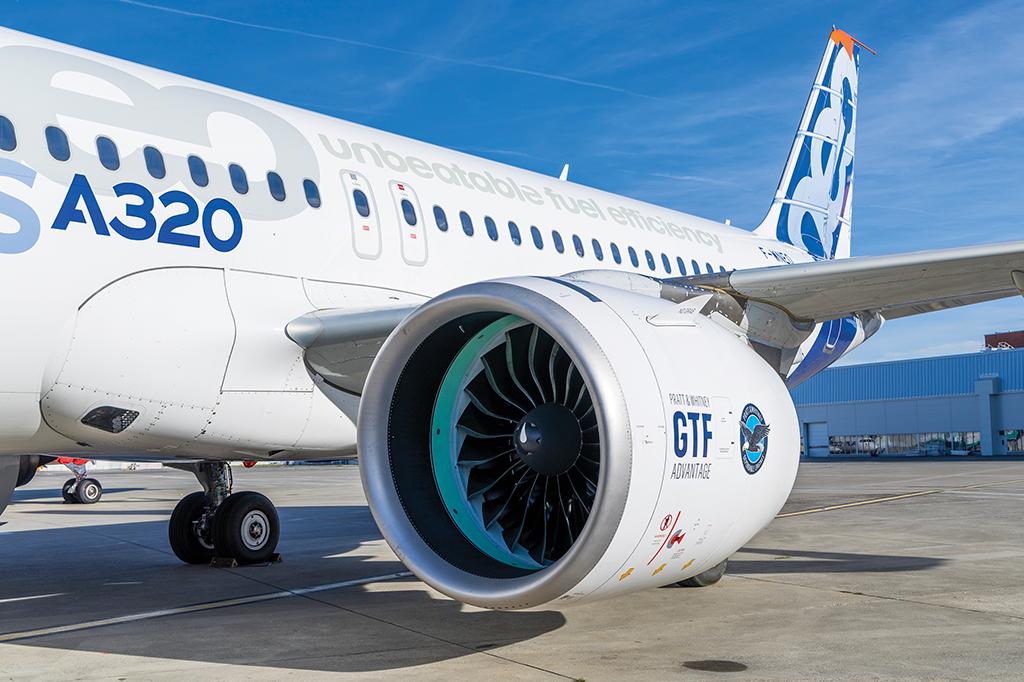
GTF engine maintenance demand is projected to rise rapidly starting in 2027.
The global fleet of Pratt & Whitney PW1000G geared turbofan (GTF) engines is expected to rise to 14,300 engines by 2032 from about 4,150 in 2023, according to Aviation Week’s 2023 Fleet & MRO Forecast. Most of these will be the PW1100 variant on the Airbus A320neo platform, on which the engine competes with the CFM Leap 1A.
Although the GTF entered service before its rival, the Leap 1A’s installed base has overtaken it on A320neo-family aircraft. However, Aviation Week forecasts a fairly even market share over the next decade, with the Leap’s share on the Neo nudging up to 53% by 2032 from 52% in 2023.
The GTF retains a solid position on the world’s best-selling aircraft, and it is the only engine option for the increasingly popular Airbus A220 and Embraer’s E2 line.
Repairs and Retrofits
Pratt used the extensive aircraft downtime during the pandemic to address the durability issues that affected the GTF in its early years, and the engine-maker is now focusing on improved performance and longer time on wing.
“Having entered service in 2016, the GTF engine is still relatively young, and its configuration and associated repair portfolio continue to mature,” notes Marc Meredith, executive director for the GTF engine aftermarket at Pratt & Whitney.
“Through our network of global MRO providers, we are focusing our efforts on targeted upgrades and retrofits to existing hardware designed to improve performance and extend time on wing,” he adds. “At the same time, we are constantly evaluating potential repairs that could extend the engine’s life cycle and decrease the overall cost of ownership to our customers in the future.”
Pratt & Whitney boasts an increasingly strong position in the GTF aftermarket, reporting that more than four in five GTF deliveries are now attached to its “EngineWise” maintenance contract.
“The landscape has certainly changed over the past 20 years in aftermarket services,” Meredith says.
“Where legacy fleets at the turn of the century were rarely covered by long-term dollar-per-flight-hour maintenance agreements, the fleets being delivered today are upwards of 80% covered by EngineWise agreements.”
Meredith says that many of these contracts are flight-hour based, adding: “Most operators today are using the aircraft and engine point-of-sale to bundle a long-term EngineWise aftermarket agreement, thereby locking in maintenance costs and managing their risk by leveraging the expertise and knowledge of the OEM.”
Asked whether Pratt would like to move more customers to time-and-materials deals, which are generally more profitable than flight-hour-based contracts Meredith says that as the maturity and reliability of the GTF rise, the OEM will respond to the needs of airlines and lessors.
“We currently offer both flight-hour-based and non-flight-hour-based agreements, and we constantly evaluate how to provide the best maintenance offering and will continue to assess that as the fleet matures,” he says.
Aviation Week predicts that GTF engine maintenance demand will traverse two distinct phases this decade. From 2023-27, the market is expected to grow from an annual market size of about $250 million to about $850 million. Thereafter, shop visits should ramp up dramatically, with annual maintenance demand projected to climb rapidly to $4.5 billion by 2031.
“We often work with both airlines and lessors to ensure we have a tailored EngineWise product offering that provides the maintenance solution the airline needs for their operation as well as helping to protect the asset value for the lessor,” Meredith adds.
Supply Chain
Meredith tells Inside MRO that Pratt expects supply chain pressures on its engine production and maintenance operations to ease next year.
“Like many in the industry, we have experienced supply chain challenges with structural castings and other parts,” he says. “We continue to work on mitigation strategies with our supply base and expect pressures to begin to ease in 2023, which will support both our OE and MRO output plans.”
In September, long-simmering tensions with Airbus surfaced again about its narrowbody production, which the European airframer wants to raise to 65 A320-family aircraft per month by next year and 75 by 2025.
Airbus Chief Executive Guillaume Faury described as “not helpful” comments by Greg Hayes, the CEO of Pratt parent Raytheon Technologies, that 65 aircraft per month is a more realistic goal for 2025 than 75.
Several lessors also have expressed doubt that Airbus can retain its ramp-up target, given the ongoing issues its suppliers are facing.
In the nine months to Sept. 30, Airbus delivered 340 A320-family units, which equates to 38 per month, although it also retains an inventory of undelivered aircraft, so actual production was probably higher.
While Meredith will not address specific targets, he says Pratt is working toward higher output of geared turbofan engines. “We believe demand is there to increase production volumes, and we are working on a path to meet it, in close coordination with our airframer customers,” he says.

Upgrades
In 2023, Pratt & Whitney intends to start producing as standard an improved version of the engine called the GTF Advantage. Development flight testing on an A320neo began in Canada in October, and certification of the engine will run through the first half of 2023.
The engine, which is rated at up to 32,000 lb. of thrust, runs cooler than the current-model GTF and is intended to offer 1% better fuel burn. It is also designed to be able to run on 100% sustainable aviation fuel.
“GTF Advantage provides more thrust while running cooler, with more airflow and improvements in aerodynamics, coatings and clearance control,” notes Jim Pennito, vice president of A320neo-family engines at Pratt & Whitney.





